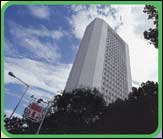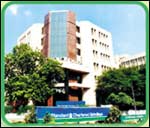|
Letting
Go
 Between
them Standard Chartered and Grindlays employed around 5,700 people.
There were, on an average, two people for every available position.
Right-sizing (forget the euphemism, it was simple pruning) was necessary. Between
them Standard Chartered and Grindlays employed around 5,700 people.
There were, on an average, two people for every available position.
Right-sizing (forget the euphemism, it was simple pruning) was necessary.
Step I Bindra followed the guidline
that neither of the two banks would account for more than 60 per
cent of the jobs.
Step II The people offered separation
packages were outplaced
Step III Communication overdrive
Step IV The integration committee insisted
on hiring afresh. Among the new hires were Rajan Ray, the head of
the corporate and institutional banking business and M.A. Ravi Kumar,
the regional head of the bank's global markets operation.
The inevitable stories about a bloodbath followed.
While it was true that everyone had to re-apply for his, or her
job, Standard Chartered lost only two key employees: Harpal Duggal,
who himself had a shot at the top post, and Jeswant Nair, Regional
Head, Human Resources. Today, Standard Chartered employs 3,600,
and has moved to a performance-oriented culture. "In the past,"
laughs Bindra, "we were nice to everyone." Nice guys come
last.
Managing The Regulator
 |
| RBI's headquarters, Mumbai |
India's central
bank was concerned about the Standard Chartered-Grindlays integration.
There had, after all, been no merger of a similar magnitude to set
a precedent. "The regulator didn't just monitor or guide us,"
says Rajiv Uberoi, a former RBI and Grindlays hand who now serves
as Standard Chartered's regional head of legal and compliance. "It
even carried out an inspection of the bank in July 2002 and validated
the fact that we were on the right track." For good measure,
Bindra and Uberoi met with the central bank every month; every quarter,
the duo made a presentation to the RBI Governor and Deputy Governor
on the progress made in the integration process. In May 2002, the
bank submitted a scheme of amalgamation-a sign that the integration
process was almost done-to the RBI; the regulator approved the scheme
in mid-August; and on August 31, 2002, standard Chartered announced
the completion of its merger process.
 |
| Grindlays Garden, Chennai |
Managing Real Estate
On October 31,
2000, 186 days after Standard Chartered announced that it was acquiring
Grindlays in West and South Asia, the display outside all 39 Grindlays
branches across 16 cities had changed. They now read Standard Chartered
Grindlays Bank. Nearly 350 document formats, 500 lease agreements,
800 items of stationery and marketing merchandise were changed.
Still, the new Standard Chartered, it was evident form the beginning,
would have more space than it needed. Branches in cities such as
Guwahati, Kanpur, and Shimla, more a legacy of history than a result
of a pressing business need to be there, were shut. Space was divested,
or repurposed, people relocated, and offices standardized. The result?
The efficiency per square foot of space increased 25 per cent in
the past year. And the divestment of between 800,000 sq. ft. and
10,00,000 sq. ft. of real estate fetched the bank Rs 110 crore.
Not all excess real estate was sold. Grindlays Garden, in Chennai's
up-market Haddows Road was repurposed into Scope, 550,000 square
feet housing Standard Chartered's global processing hub. "We
had been considering building a processing hub in India," says
Ajoy Kapoor, "and this (Grindlays Garden) gave us the opportunity
to realise our objectives sooner." Not everything, though,
was about divesting and repurposing. Understanding the importance
of keeping its people motivated in what was essentially an uncertain
transition period, the bank used some of the space to create cafeterias,
informal meeting rooms, and gymnasiums. Food heals.
Getting Systems To Talk
 |
| It's one bank now |
It was a recipe
for disaster: Standard Chartered followed a centralised processing
model; Grindlays, a decentralised one. And while a centralised model
has its advantages, a dc one does serve better in a few cases such
as cash management. The new Standard Chartered didn't follow sweeping
guidelines; instead, says COO Soumen Basu, it chose to let "business
dictate IT needs". The bank also took its time, ensuring that
everything was in place before effecting the integration of the
two IT back-ends.
Thus, although the integration of the two credit
card businesses happened in August 2001, the consumer asset businesses
merged in February 2002, and the two banks became one legal entity
on August 31, 2002, it was only on September 7 that the IT integration
was achieved. That did mean some manual turnarounds-the world saw
one bank, but there were two for these seven days, and their systems
weren't ready to talk to each othe-and a two-in-one clearing house
(put simply, a clearing house is where inter-bank cheques are processed)
that processed 5-6 per cent of the cheques written in India every
day. On September 7, 2002, the liabilities of the two banks were
merged, and close to 600,000 accounts moved to one network. The
new Standard Chartered had arrived.
THE RETAIL STRATEGY
We'll say it again, consumer banking is the
growth engine.
- Strive to be among top
three across product categories
- Increase participation in existing markets
- Expand presence to 25 cities from the existing
15
- Reduce cost-income ratio, which stands at
52 per cent today
- Focus on profitable relationships
- Balance portfolio by focusing on secured
products, NRI business, and SMEs
THE MAN IN CHARGE
 |
| Jaspal Bindra: Overseeing complexity |
Age: 42
Education: CA; MBA from XLRI, Jamshedpur
Track record: Before he became CEO,
Standard Chartered Group, India Region, in August 2000, Bindra headed
the bank's corporate business. A career banker, his CV includes
stints at UBS, where he headed the structured finance, capital markets,
and debt operation, and at Bank of America, where he held senior
positions in corporate banking and set up the treasury operations
in Mumbai and Delhi
Interests: The movies. Marilyn Monroe
and Aishwarya Rai are his favourite leading ladies. And travelling,
which he does plenty of, thanks to his job
Family: Wife Sumi, a homemaker and son,
Amrit
THE INTERNATIONAL PERSPECTIVE
 |
| Patrick Gillam, Chairman, Stanchart: Does
he prefer the quiet approach? |
Standard chartered
may be headquartered in London but make no mistake, it is an emerging
markets bank. The leading one, actually. Indeed, the bank's presence
in Europe and the US is largely to serve its Asian clients in those
markets. Over the past decade, first under Malcom Williamson and
then under Rana Talwar, it focused exclusively on growing its emerging
markets business. Talwar, perhaps influenced by his years at aggressive
Citi was responsible for two of the largest acquisitions in the
history of the bank: of Grindlays in West and South Asia, and Chase's
consumer banking business in Hong Kong. The second made Standard
Chartered the largest credit card issuer in that market. And the
first helped it become the regions largest bank, overtaking Citi
and HSBC. By November 2001 Talwar was out, amidst speculation of
a rift with the board and with chairman Patrick Gillam, largely
a result, it was said, of Talwar's aggression. Mervyn Davies, the
new CEO has overseen the integration across the two regions; today,
the bank is reaping Talwar's whirlwind, and it isn't all bad.
WHAT COULD GO WRONG
Several spoilsports could scotch Standard Chartered's
party.
- Aggressive growth in the retail segment
could be accompanied by a rise in non-performing assets
- The bank's costs could rapidly go out of
control as it expands aggressively
- The bank could find out that it takes a
radically different business model to succeed in Tier II cities
to which it is now expanding
- Size could prevent the bank from reacting
quickly to consumer needs
1
2
|

